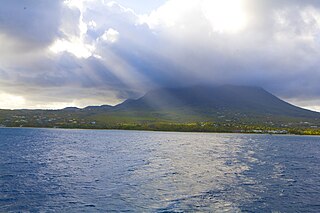 W
WThe Four Days' Battle, also known as the Four Days' Fight in some English sources and as Vierdaagse Zeeslag in Dutch, was a naval battle of the Second Anglo-Dutch War. Fought from 1 June to 4 June 1666 in the Julian or Old Style calendar that was then used in England, in the southern North Sea, it began off the Flemish coast and ended near the English coast. It remains one of the longest naval engagements in history. Dutch accounts referred to its dates as 11 June to 14 June 1666 by using the New Style calendar.
 W
WThe Battle of Lowestoft took place on 13 June [O.S. 3 June] 1665 during the Second Anglo-Dutch War. A fleet of more than a hundred ships of the United Provinces commanded by Lieutenant-Admiral Jacob van Wassenaer, Lord Obdam attacked an English fleet of equal size commanded by James, Duke of York forty miles east of the port of Lowestoft in Suffolk.
 W
WThe ships that participated in the Battle of Lowestoft, a naval engagement between the English and Dutch off the English port of Lowestoft on 13 June 1665 during the Second Anglo-Dutch War. 95 English ships, commanded by James Stuart, Duke of York, faced 107 Dutch ships led by Jacob van Wassenaer, Baron Obdam. The battle ended in a victory for the English, capturing 9 Dutch ships and sinking 8 others, for the loss of only one ship.
 W
WThe Battle of Martinique also known as Harman's Martinican Bonfire was a major naval battle fought in the Caribbean island of Martinique at St Pierre, from 30 June to 7 July 1667 that came towards the end of the Second Anglo-Dutch War. A French merchantile fleet anchored in the bay led by Joseph-Antoine Le Fèvre de la Barre were attacked by an English fleet led by Admiral Sir John Harman. The English were victorious, virtually wiping out the French merchant fleet in the Caribbean, which was unaccompanied by any naval vessels, and enabled them to secure their domination and position in the West Indies despite being at the war's end.
 W
WThe Raid on the Medway, during the Second Anglo-Dutch War in June 1667, was a successful attack conducted by the Dutch navy on English warships laid up in the fleet anchorages off Chatham Dockyard and Gillingham in the county of Kent. At the time, the fortress of Upnor Castle and a barrier chain called the "Gillingham Line" were supposed to protect the English ships.
 W
WThe Battle of Nevis on 20 May 1667 was a confused naval clash in the Caribbean off the Island of Nevis during the closing stages of the Second Anglo-Dutch War between an English squadron and an Allied Franco-Dutch fleet intent on invading the island. The battle ended up being an English victory in that prevented a Franco-Dutch invasion of Nevis.
 W
WSt James' Day Battle took place on 25 July 1666 — St James' day in the Julian calendar then in use in England, during the Second Anglo-Dutch War. It was fought between fleets of England, commanded jointly by Prince Rupert of the Rhine and George Monck, 1st Duke of Albemarle, and the United Provinces commanded by Lieutenant-Admiral Michiel de Ruyter. In the Netherlands, the battle is known as the Two Days' Battle.
 W
WThe Battle of Vågen was a naval battle between a Dutch merchant and treasure fleet; and an English flotilla of warships in August 1665 as part of the Second Anglo-Dutch War. The battle took place in Vågen, the main port area of neutral Bergen, Norway. Due to a delay in orders, the Norwegian commanders took the side of the Dutch, contrary to the secret intentions of the King of Norway and Denmark. The battle ended with the retreat of the English fleet, which was much damaged but had lost no ships. The treasure fleet was relieved by the Dutch home fleet 17 days later.